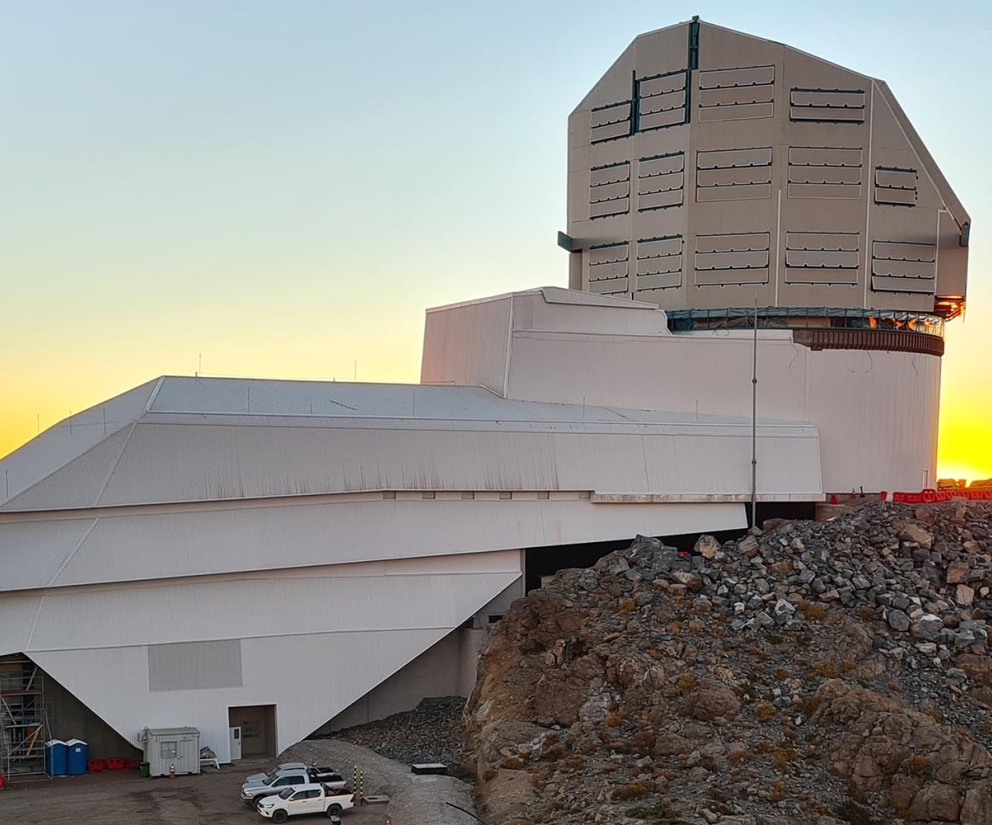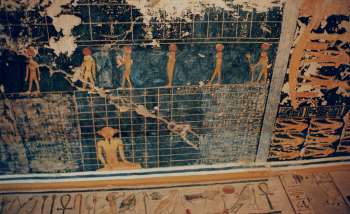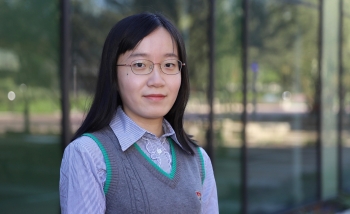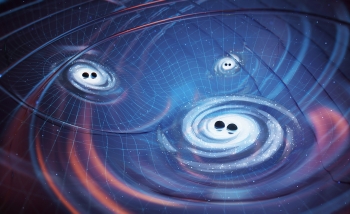Luis Lehner elected GRG fellow
Perimeter Faculty member Luis Lehner has been named a Fellow of the International Society on General Relativity and Gravitation (GRG) “for his contributions to computational gravitational physics, most notably in the areas of compact systems and their gravitational and electromagnetic signals, as well as gravity in higher dimensions.”
On learning of the distinction, Lehner commented, “This is a flattering honour for something I do with passion. The study of gravity is enjoying exciting times, which will become even more so in the coming years with experiments opening new windows to our universe – both on large scales and in the laboratory – where the understanding of strongly gravitating scenarios plays a fundamental role.”
Lehner has done pioneering work investigating how gravity operates in extreme conditions such as black holes or neutron stars. These scenarios are critical to our understanding of the birth and growth of black holes and galaxies, as well as spectacularly energetic events in our universe. They are also a cornerstone for shedding light on highly coupled scenarios through holographic studies.
With collaborators, Lehner has achieved several breakthroughs, including the first study of the dynamics of magnetized neutron star mergers (2008); the first simulation of the effects of a recoiling black hole on possible discs surrounding it (2009); the first study of binary black holes’ effects on electromagnetic fields and surrounding plasmas (2010); resolving a longstanding puzzle as to the final fate of ‘black strings,’ the higher-dimensional cousins of black holes (2010); and the first studies of the role of global magnetic fields in producing electromagnetic counterparts to loud gravitational wave events (2012).
Lehner has worked extensively on how ‘binary systems’ of two strongly gravitating bodies, such as black holes or neutron stars, interact and evolve over time. Using high-powered computers, he and his and colleagues have developed influential new methods for studying and, crucially, for detecting observable signals of powerful cosmic events in these systems.
Einstein’s theory of general relativity predicts that interactions of massive objects like black holes should produce strong gravitational waves, but they have never been directly detected (since gravity is by far the weakest of the fundamental forces, gravitational wave signals from distant events are expected to be extremely faint when they reach the Earth.)
Advanced new detectors such as LIGO should be capable of detecting gravitational waves, though astrophysicists working towards catching these signals require theoretical guidance to search for them within ‘noise’ of the detectors. The interpretation of the source – including timing and sky localization – relies on models like the one Lehner and his collaborators provide. Furthermore, detection and analysis of the signals would allow astronomers to point their telescopes in order to maximize the chances of observing rare astrophysical events, such as the birth of black holes or neutron star collisions.
The detailed computational simulations of compact systems produced by Lehner and his colleagues have provided an important new ingredient: they should emit electromagnetic radiation in addition to gravitational waves (even prior to their collision). This means that, in addition to gravitational waves, astrophysicists have a second type of signal to look for: electromagnetic waves.
‘Multimessenger astronomy’ implies it is possible to examine a given source through multiple channels. It may also allow scientists to cross-check models attempting to explain the behaviour of highly energetic events such as gamma ray bursts, which completely outshine the rest of the universe for a few seconds. The expected patterns of electromagnetic and gravitational waves amount to characteristic ‘signatures’ that could be used to predict – and hopefully observe – cosmic events like neutron star collisions, black hole mergers, or the birth of new black holes.
Lehner’s influential work has been recognized previously by the international research community; in 2009, he was elected as a Fellow of the American Physical Society, and in the same year, he was named a Fellow of the Canadian Institute for Advanced Research’s program on Cosmology and Gravity.
Further exploration
About PI
Perimeter Institute is the world’s largest research hub devoted to theoretical physics. The independent Institute was founded in 1999 to foster breakthroughs in the fundamental understanding of our universe, from the smallest particles to the entire cosmos. Research at Perimeter is motivated by the understanding that fundamental science advances human knowledge and catalyzes innovation, and that today’s theoretical physics is tomorrow’s technology. Located in the Region of Waterloo, the not-for-profit Institute is a unique public-private endeavour, including the Governments of Ontario and Canada, that enables cutting-edge research, trains the next generation of scientific pioneers, and shares the power of physics through award-winning educational outreach and public engagement.




